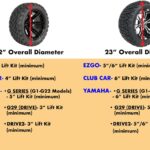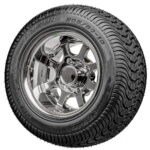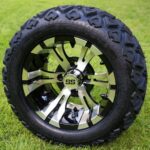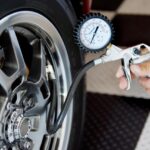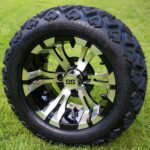Tire pressure for golf cart tires is a crucial factor that impacts performance, safety, and longevity. Understanding the basics of tire pressure and how to determine the optimal pressure for your golf cart is essential for a smooth and enjoyable ride.
This comprehensive guide will delve into the importance of tire pressure, the consequences of incorrect pressure, and provide practical tips for maintaining proper tire pressure. We’ll also explore special considerations for different golf cart types and emphasize safety precautions when handling tires.
Understanding Tire Pressure Basics
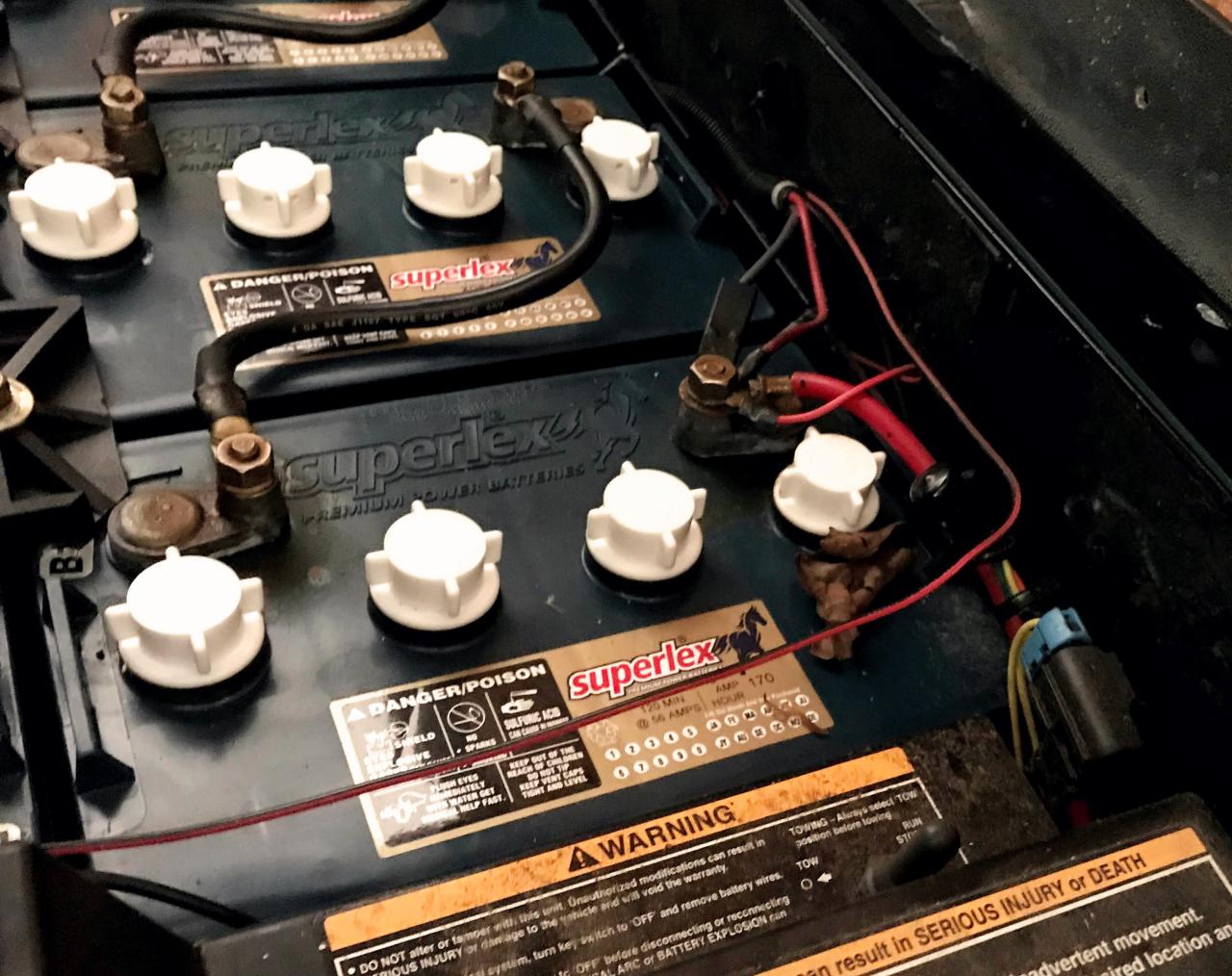
Tire pressure is a crucial factor that significantly influences the performance and safety of golf cart tires. It refers to the amount of air inside a tire, which affects its firmness and contact with the ground. Maintaining optimal tire pressure is essential to ensure proper handling, stability, and longevity of your golf cart.
Overinflation and underinflation are two common tire pressure issues that can have detrimental effects. Overinflation makes tires harder, reducing their ability to absorb shocks and grip the ground effectively. This can lead to a bumpy ride, reduced traction, and premature tire wear. On the other hand, underinflation causes tires to become soft and more prone to punctures. It also increases rolling resistance, reducing the cart’s efficiency and potentially damaging the tires.
Maintaining optimal tire pressure is crucial for the performance and safety of your golf cart. For 12 inch golf cart wheels, the recommended tire pressure typically ranges from 15 to 20 psi. By adhering to these guidelines, you can ensure maximum grip, stability, and reduced wear and tear on your tires.
Proper tire pressure not only enhances the overall driving experience but also extends the lifespan of your 12 inch golf cart wheels and tires.
Determining Optimal Tire Pressure
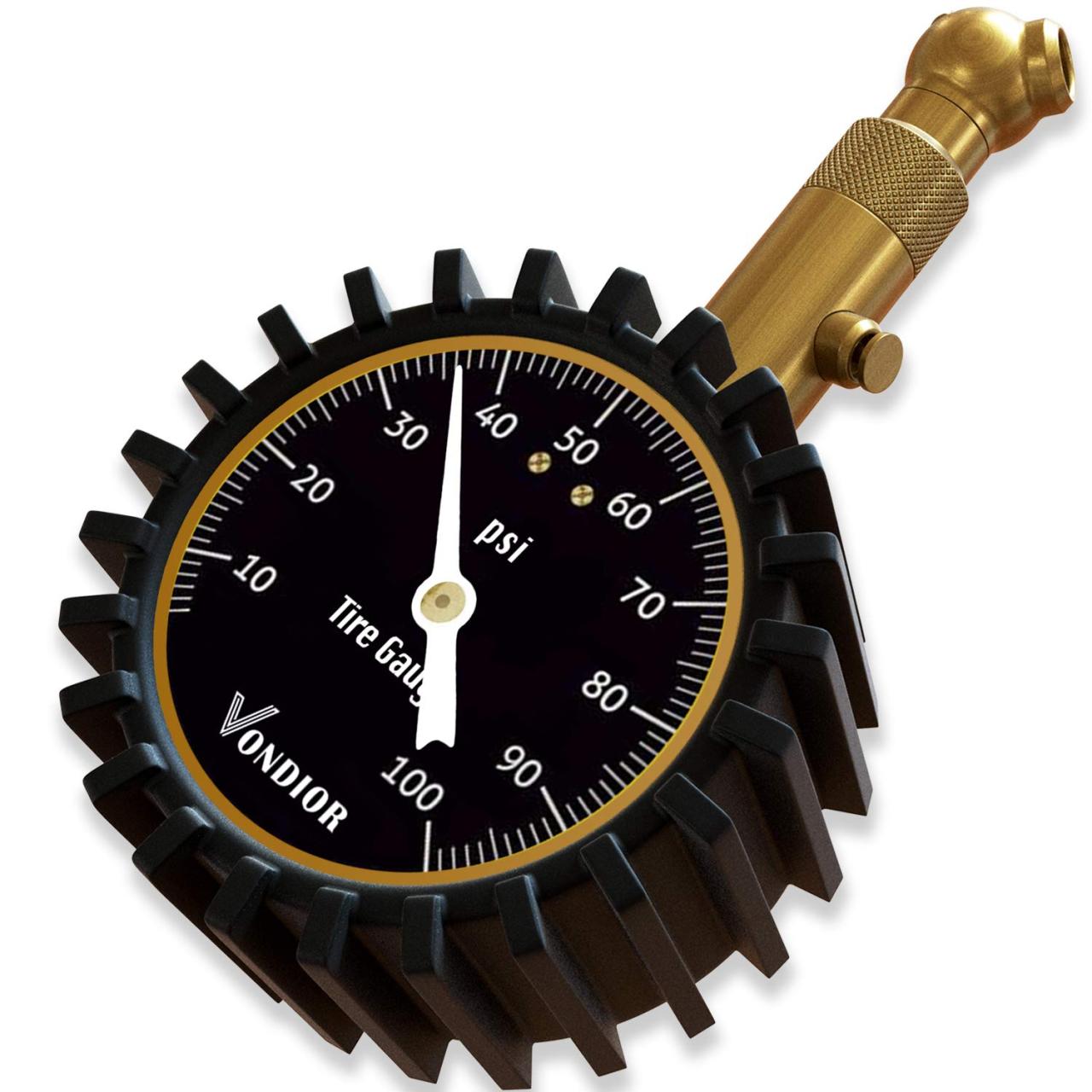
Optimizing tire pressure is crucial for ensuring the performance, safety, and longevity of golf cart tires. The ideal pressure varies based on several factors, including tire size, load, and terrain. Here are some guidelines to help you determine the optimal tire pressure for your golf cart:
Factors Influencing Tire Pressure:
- Tire Size: Larger tires generally require higher pressure than smaller tires.
- Load: The weight of the passengers, cargo, and accessories on the golf cart affects the ideal tire pressure.
- Terrain: Soft surfaces like grass or sand require lower tire pressure, while harder surfaces like asphalt or concrete require higher pressure.
Using a Tire Pressure Gauge
To ensure accurate tire pressure readings, follow these tips when using a tire pressure gauge:
- Remove the valve cap from the tire.
- Align the gauge perpendicular to the valve stem and press it down firmly.
- Hold the gauge steady until the reading stabilizes.
- Record the pressure reading and compare it to the manufacturer’s recommended pressure.
- Replace the valve cap to prevent air leakage.
Consequences of Incorrect Tire Pressure
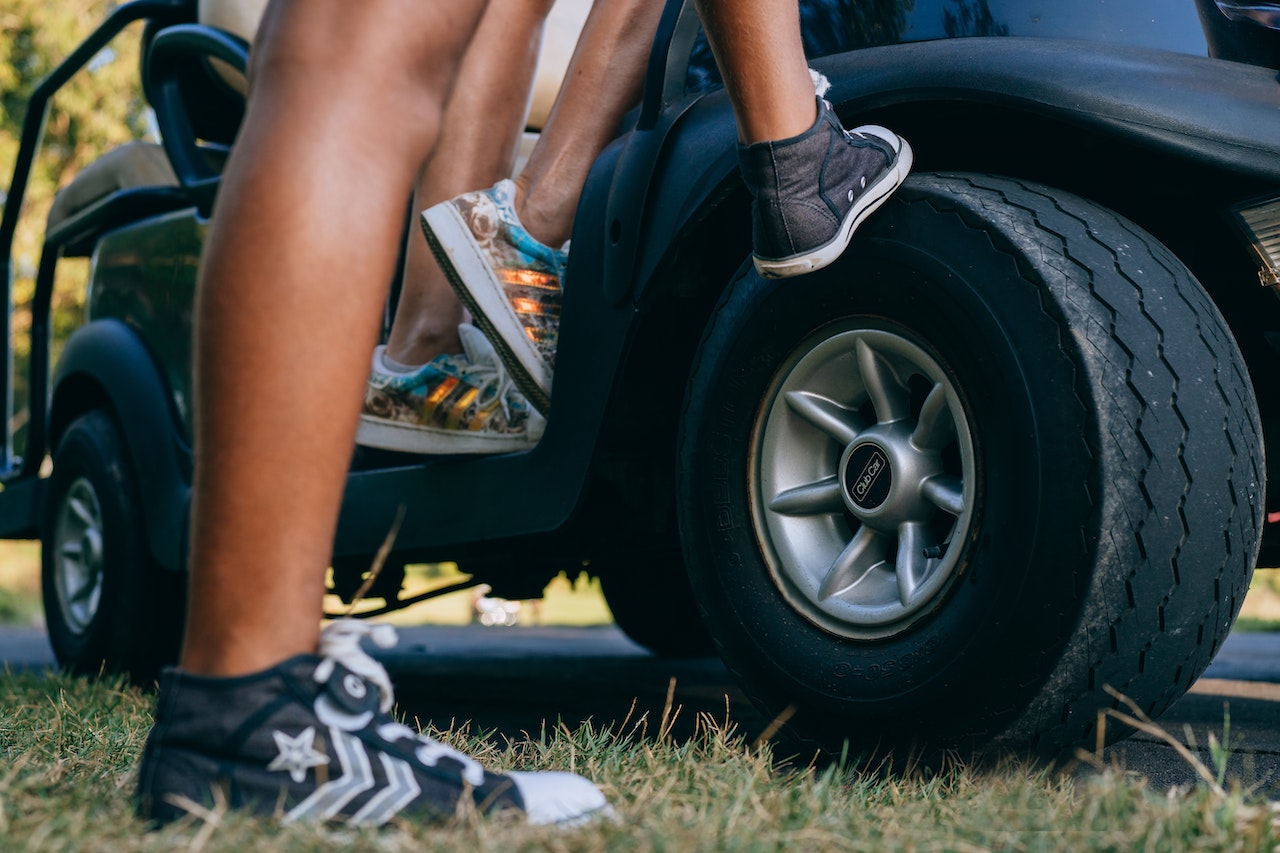
Incorrect tire pressure can have several negative impacts on the performance and safety of a golf cart. It can lead to premature tire wear, reduced traction, handling issues, and decreased overall safety.
Premature Tire Wear
When tire pressure is too low, the tires will have a larger contact patch with the ground, which increases friction and generates more heat. This excessive heat can cause the tires to wear out prematurely, reducing their lifespan and requiring more frequent replacements.
Maintaining Proper Tire Pressure

Maintaining optimal tire pressure is crucial for the safety, performance, and longevity of your golf cart. Regular checks and adjustments are essential to ensure that your tires are always inflated to the correct level.
Step-by-Step Tire Pressure Checking and Adjustment
- Park the golf cart on a level surface and allow the tires to cool for at least 30 minutes. This will ensure that the tire pressure readings are accurate.
- Locate the tire pressure valve on the sidewall of each tire. Remove the valve cap and insert a tire pressure gauge into the valve.
- Read the tire pressure gauge and compare it to the recommended pressure for your golf cart tires. The recommended pressure can be found in the owner’s manual or on the sidewall of the tires.
- Adjust the tire pressure if necessary. If the tire pressure is too low, use a tire inflator to add air until it reaches the recommended level. If the tire pressure is too high, use a tire deflator to release air until it reaches the recommended level.
- Replace the valve cap and check the tire pressure again to ensure it is at the correct level.
It is recommended to check the tire pressure of your golf cart at least once a month or before each use. This will help you identify and correct any tire pressure issues early on, preventing potential problems.
Importance of Maintaining Consistent Tire Pressure, Tire pressure for golf cart tires
Maintaining consistent tire pressure is essential for optimal performance and safety. Proper tire pressure provides the following benefits:
- Improved traction and stability, especially on uneven terrain.
- Reduced rolling resistance, which leads to improved battery life and reduced energy consumption.
- Increased tire life by preventing uneven wear and premature failure.
- Enhanced safety by reducing the risk of blowouts and other tire-related accidents.
By maintaining consistent tire pressure, you can ensure that your golf cart operates at its best and provides you with a safe and enjoyable ride.
Troubleshooting Common Tire Pressure Problems
If you are experiencing tire pressure problems, there are a few common causes to check:
- Slow leaks: Inspect the tires for any punctures or cracks that may be causing a slow leak. Use a soapy water solution to identify any leaks.
- Valve stem leaks: The valve stem can also be a source of leaks. Check the valve stem for any damage or corrosion.
- Overinflation: Overinflating tires can cause them to bulge and become more susceptible to damage. Check the tire pressure regularly and adjust it to the recommended level.
- Underinflation: Underinflated tires can cause the sidewalls to flex excessively, leading to premature wear and increased rolling resistance. Check the tire pressure regularly and adjust it to the recommended level.
If you are unable to identify or resolve the cause of the tire pressure problem, it is recommended to consult with a qualified mechanic.
Special Considerations for Different Golf Cart Types: Tire Pressure For Golf Cart Tires

Different types of golf carts have varying tire pressure requirements based on their design, weight, and intended use. Understanding these differences is crucial for maintaining optimal performance and safety.
Electric Golf Carts
Electric golf carts are typically lighter than gas or utility models. They require lower tire pressure, usually ranging from 10 to 15 psi. This lower pressure reduces rolling resistance, improving battery life and efficiency.
Gas Golf Carts
Gas golf carts are heavier and more powerful than electric carts. They require higher tire pressure, typically between 15 and 20 psi. This increased pressure provides better stability and handling, especially when carrying heavier loads or navigating uneven terrain.
Utility Golf Carts
Utility golf carts are designed for heavy-duty tasks and can carry significant weight. They require the highest tire pressure among golf carts, typically ranging from 20 to 25 psi. This high pressure ensures adequate support and stability when carrying heavy loads or operating in rough conditions.
Safety Precautions
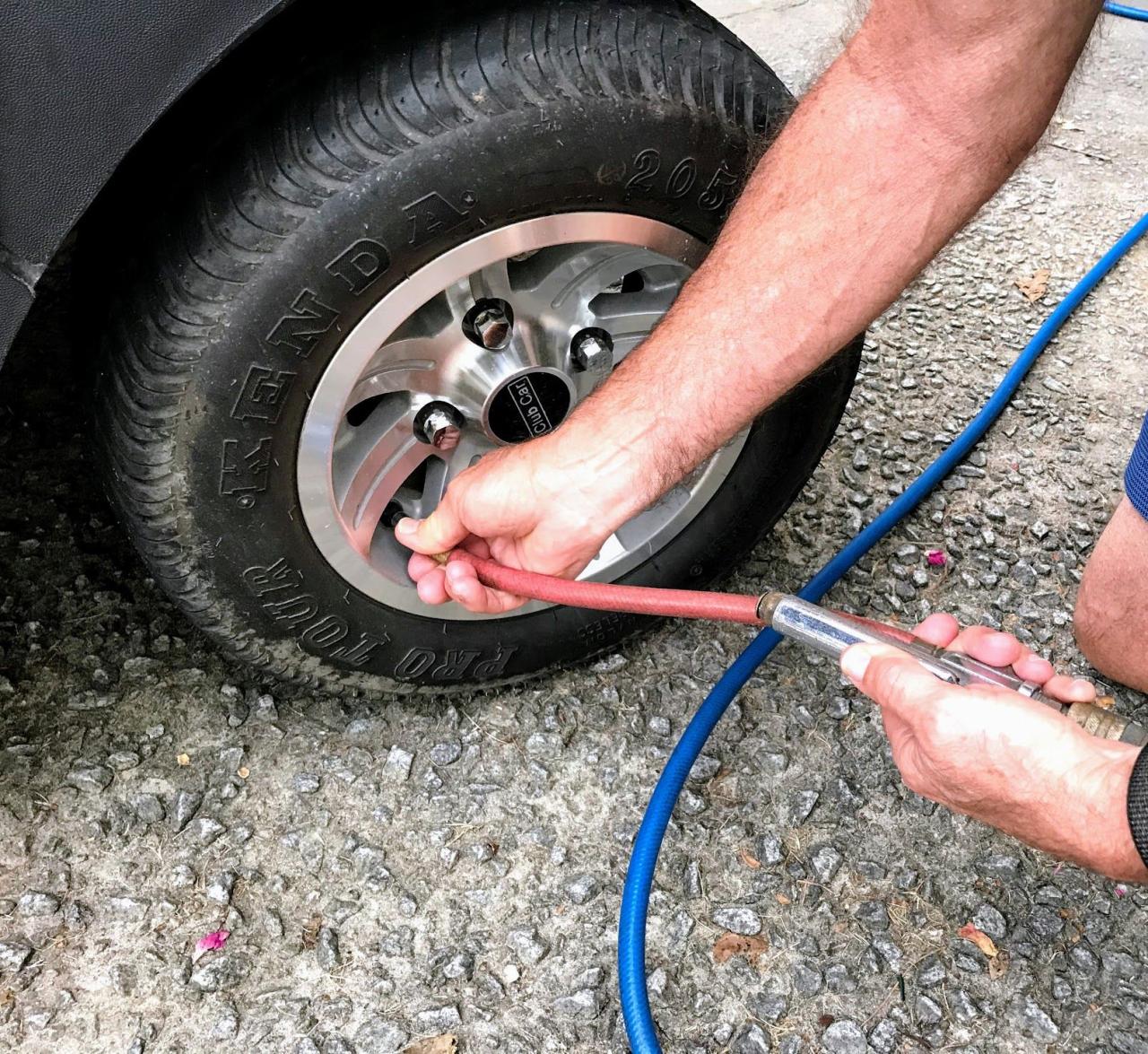
Handling golf cart tires requires utmost caution to ensure safety. Improper inflation or deflation can lead to hazardous situations.
Overinflation can cause the tire to burst, resulting in a sudden release of high-pressure air. This can be dangerous for anyone in the vicinity. Underinflation, on the other hand, can lead to excessive tire wear, reduced stability, and increased risk of punctures.
Safely Inflating and Deflating Tires
- Always wear safety glasses and gloves when inflating or deflating tires.
- Use a tire pressure gauge to accurately measure the tire pressure.
- Inflate the tire to the recommended pressure, as specified by the manufacturer.
- Avoid overinflating the tire, as this can lead to a blowout.
- If you need to deflate a tire, use a tire deflator or carefully release the air by pressing on the valve stem with a tool.
Summary
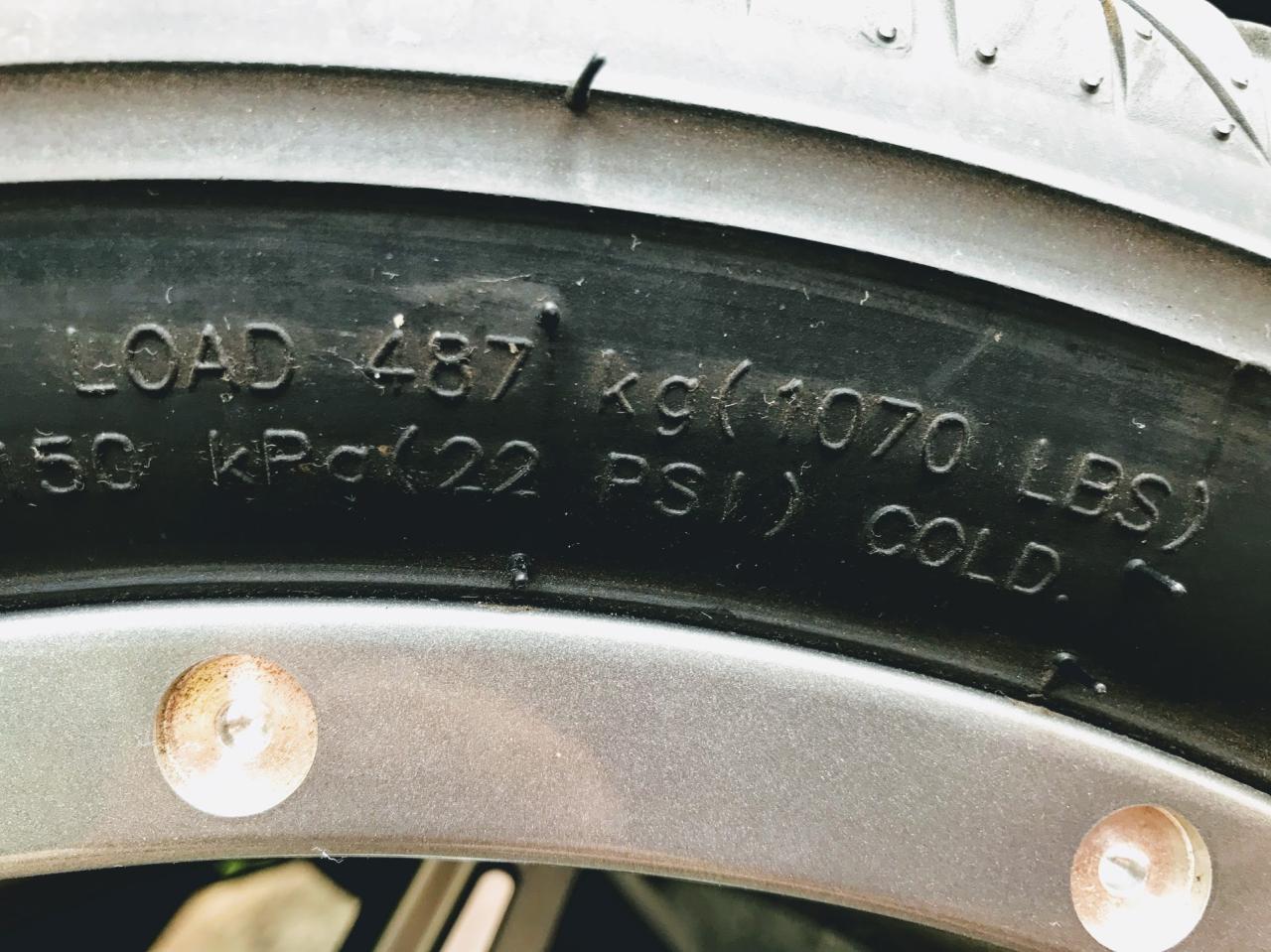
By following the guidelines Artikeld in this guide, you can ensure that your golf cart tires are always properly inflated, maximizing performance, safety, and extending their lifespan. Remember to regularly check and adjust tire pressure, especially before and after extended periods of use.
